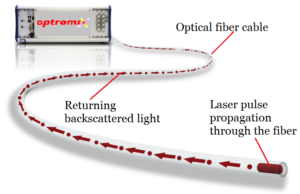In the modern world, the increasing electricity consumption and high demand for energy lead to an increase in stress on the power cables that often reach their physical limits. This affects the safety of power lines and their efficiency. To combat these issues, real-time thermal ratings may be implemented to observe the thermal behavior of cables and calculate their operational limits. The knowledge of these parameters is key to control the safety and efficiency of power lines, as unforeseeable thermal conditions do, in fact, lead to system degradation and capacity reduction. Real-time thermal rating aid in saving maintenance time, optimization of resources, and improving the efficiency of power lines.
Real-time thermal ratings may not only assist in perfecting already existing energy systems but also to integrate alternative power sources, such as wind energy systems. To improve the wind energy infrastructure and to further integrate renewable energy sources into mainstream energy production, the reduction of restrictions placed on wind energy is necessary for elevating the efficiency of such systems. The following measurements are required in order to implement real-time thermal ratings into the network: wind speed, thermal state estimations, temperature, and voltage measurements. The combination of these variables creates real-time ratings for wind energy systems.
The evaluation of said measurements provides crucial information on the ways in which wind energy capacity may be increased. For example, an implementation of thermal ratings that was conducted in 2010 revealed that the cooling effect of wind significantly affects wind power lines and may potentially lead to an increase in their electrical capacity up to 30%.
These results proved to be significant to the field and provided valuable insight into the generation capacity and its potential increases. It is expected that real-time thermal readings will allow for increased integration of wind energy into the distribution network.
Fiber Bragg temperature sensors are insensitive to changes in the environment, which is important for wind energy generators, and have a long reliability period. If you would like to purchase Optromix FBG Temperature Sensors, please contact us: info@optromix.com or +1 617 558 98 58.


 The main idea of the
The main idea of the